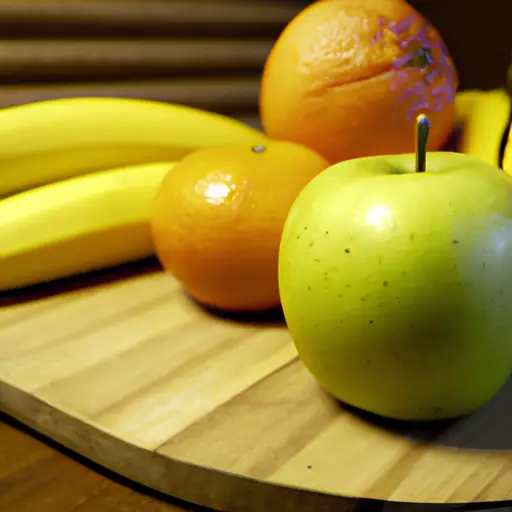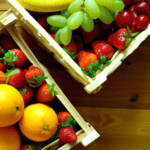Choosing the highest quality fruit is an art that can be learned and improved. When we understand the fruit, we are able to choose the best fruits they have to offer. It requires a little effort, but the results are worth the effort.
Get to know the fruit: a guide to choosing the highest quality fruit
1. Choose fruits that look fresh and healthy to the eye. 2. Check the fruit for signs of damage, such as spots or holes. 3. Place the fruit in your hand. It should feel heavy for its size. 4. Press the fruit gently. If he has some flexibility, he is usually between. 5. Smell the fruit. Medium and medium fruits will have a strong and delicious smell. 6. Choose fruits that look fresh and healthy to the eye. 7. Check the fruit for signs of damage, such as spots or holes. 8. Put the fruit in your hand. It should feel heavy for its size. 9. Press the fruit gently. If it has some flexibility, it's usually half done. 10. Smell the fruit. Medium and medium fruits will have a strong and delicious smell. The first step in choosing the highest quality fruit is to understand the fruit we want to buy. Each fruit has its own characteristics that indicate its quality. For example, fresh apples will be hard to the touch, while old apples will be soft. Accordingly, we must study the characteristics of each fruit to understand its quality. The next step is to examine the fruit. This includes examining the color, appearance, texture and smell of the fruit. A high quality fruit will have a bright and full color, a smooth and unstained appearance, a firm texture and a fresh smell. If the fruit shows signs of deformity, spots or a bad smell, this can be a sign that the fruit is not of the highest quality. After examining the fruit, the next step is to feel the fruit. This includes pressing the fruit gently to test its texture. High quality fruit will be firm but not too hard. If the fruit is too soft, it could be a sign that the fruit has passed its prime. Next, we must listen to the fruit. It sounds strange, but some fruits, such as avocados and melons, make a sound when placed in the ear. If the fruit makes a weak sound or no sound at all, this can be a sign that the fruit is not at its peak freshness. Finally, we must taste the fruit. High quality fruit will be delicious and full of flavor. If the fruit does not taste good or its flavors are weak, this can be a sign that the fruit is not of the highest quality. Choosing the highest quality fruit is a process that requires some effort and dedication, but the results are worth the effort. When we understand the fruit, we are able to choose the best fruits they have to offer.
Behind the scenes of the supermarket: how to choose the freshest fruits
 Choosing fresh and quality fruits is an art that can be learned and improved. When we go to the supermarket, we focus on the prices, the promotions and the appearance of the fruits, but we often ignore the really important criteria that reveal the true quality of the fruits. The first place we refer to is the external appearance of the fruit. A healthy and fresh fruit will have an impressive appearance, bright colors and no spots or signs of damage. However, it is important to remember that a fruit that looks perfect does not necessarily indicate its quality. Sometimes, fruits that look less than perfect from the outside can be more delicious and full of vitamins than those that look "perfect". The weight of the fruit is another important factor to pay attention to. Fresh and healthy fruit will be heavy for its size. This indicates the amount of water it contains, which is one of the main ingredients in fruits. Fruit that is too light can be a sign that it is drying out and not fresh. The smell of the fruit is another important factor to consider. Fresh fruit will have a strong and delicious smell. If you do not feel any smell, the fruit may not be ripe enough or it is not fresh. If the smell of the fruit feels too pungent, the fruit may have already passed its optimal ripening stage. Finally, if the fruit allows it, try to press it gently. Fresh fruit will be firm but flexible, and will not leave signs of being pressed. If the fruit is too soft, it may already be rotting. Choosing fresh, high-quality fruit is a skill that can be easily improved with time and experience. As you get used to choosing fruits more consciously, you will find that you improve the quality of your diet and the pleasure you get from your food.
Choosing fresh and quality fruits is an art that can be learned and improved. When we go to the supermarket, we focus on the prices, the promotions and the appearance of the fruits, but we often ignore the really important criteria that reveal the true quality of the fruits. The first place we refer to is the external appearance of the fruit. A healthy and fresh fruit will have an impressive appearance, bright colors and no spots or signs of damage. However, it is important to remember that a fruit that looks perfect does not necessarily indicate its quality. Sometimes, fruits that look less than perfect from the outside can be more delicious and full of vitamins than those that look "perfect". The weight of the fruit is another important factor to pay attention to. Fresh and healthy fruit will be heavy for its size. This indicates the amount of water it contains, which is one of the main ingredients in fruits. Fruit that is too light can be a sign that it is drying out and not fresh. The smell of the fruit is another important factor to consider. Fresh fruit will have a strong and delicious smell. If you do not feel any smell, the fruit may not be ripe enough or it is not fresh. If the smell of the fruit feels too pungent, the fruit may have already passed its optimal ripening stage. Finally, if the fruit allows it, try to press it gently. Fresh fruit will be firm but flexible, and will not leave signs of being pressed. If the fruit is too soft, it may already be rotting. Choosing fresh, high-quality fruit is a skill that can be easily improved with time and experience. As you get used to choosing fruits more consciously, you will find that you improve the quality of your diet and the pleasure you get from your food.
The science behind fruit: what to look for when choosing fruit
Choosing the right fruit is a process that begins with understanding the science behind the fruit. When we understand the science behind fruits, we are able to choose fruits more wisely and consciously. Here, we'll review the science behind fruit and show what to look for when you're choosing fruit. The science behind the fruits begins with an understanding of the process of maturation. Fruits ripen when they release ethylene gas, which is a hormone that promotes ripening. When the fruit releases ethylene, it begins to soften and change color. This is the time when the fruit is the sweetest and tastiest. So, what to look for when you choose fruit? First of all, pay attention to the color. Bright and colorful fruits usually indicate fullness and maturity. Dark or spotted fruit can be a sign of damage or overripeness. In addition, you will pay attention to the appearance of the fruits. Fruit that shows signs of drying or deformation can be a sign of injury or imperfection. Fruit showing signs of moisture or with a shiny appearance can be a sign of perfection and maturation. Next, you'll notice the weight. Fruits that are heavy for their size usually indicate fullness and maturity. Fruits that are lighter for their size can be a sign of imperfection or drying. Finally, you will notice the smell. Fruits with a strong and delicious smell usually indicate perfection and maturity. Fruits that are odorless or with an unpleasant odor can be a sign of imperfection or overripeness.

